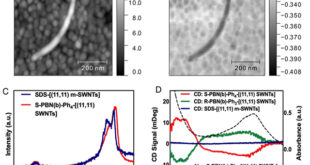Significance
Organic electrochromic polymers (ECPs) exhibiting remarkable properties have been extensively researched for potential applications in numerous fields including manufacturing of electrochromic inks and display screens. Since the report about the first donor-acceptor type black to transmissive switching electrochromic polymer a decade ago, subsequent researches focusing on understanding the relationship between the structure and properties of such polymers as well as developing polymers with improved colorimetric properties have gained momentum. Some of the approaches adopted so far to improve the colorimetric properties of electrochromic devices (ECDs) include the optimization of both polymer structures and ECD configurations. Nevertheless, despite the significant research efforts, production of low-cost black to transmissive switching polymers with high-performance colorimetric properties in both oxidized and neutral states have remained a significant challenge. This can be attributed to the use of complex monomers that require multiple steps to synthesize and the scarcity of polymers that exhibit black color in a neutral state and neutral color in the bleached state.
To this note, Dr. Cheng Chen and Dr. Qifan Yan from East China University of Science and Technology demonstrated a strategy for preparing low-cost black to transmissive switching electrochromic polymers with improved colorimetric properties in both oxidized and neutral states. Their research work is currently published in the journal, Dyes and Pigments.
In their approach, a series of ECP P2-P6 polymers were prepared by incorporating three different low-cost spacing units: naphthalene, carbazole, and phenylene into polymer P1, a copolymer of 3,4-propylenedioxythiophene (ProDOT) and benzothiadiazole, to improve their colorimetric properties. Alternatively, the polymers P2-P6 with the above spacing units could be prepared via a C-H arylation polymerization between the readily available monomers, which is a rather simple method. Furthermore, the chemical structures and feed ratios of the spacing units were varied to tune the colorimetric properties of the resulting polymers.
The authors reported the fabrication of low-cost black ECPs P2-P6 with improved colorimetric properties in both neutral and oxidized states. The reduction in the preparation cost was mainly attributed to the use of readily available monomers and simple C-H directive arylation polymerization method. Among the three spacing units, polymers incorporating the phenyl units exhibited the greatest improvements in the colorimetric properties. Furthermore, the effects of the proportion of spacing units for the polymer was investigated. Results showed that an increase in the proportion of the spacing units resulted in a corresponding increase in the absorption in the short wavelength region. On a positive note, the authors also noted that polymers P4 and P6 exhibited significantly improved colorimetric properties compared to most of the available polymers.
In a nutshell, the study reported a feasible, simple and low-cost strategy for the preparation of black to transmissive switching electrochromic polymers with enhanced colorimetric properties. Results showed that the colorimetric properties of the resulting P4 and P6 ECPs outperformed most of the existing black polymers. In a statement to Advances in Engineering authors noted that the simple preparation method and low-cost polymers with remarkable colorimetric properties are potential candidates for industrial applications across several fields.
Reference
Chen, C., & Yan, Q. (2020). Achieving excellent colorimetric properties of low-cost black to transmissive switching electrochromic polymers by incorporating of spacing units into copolymers of 3,4-propylenedioxythiophene and benzothiadiazole. Dyes and Pigments, 178, 108378.
 Advances in Engineering Advances in Engineering features breaking research judged by Advances in Engineering advisory team to be of key importance in the Engineering field. Papers are selected from over 10,000 published each week from most peer reviewed journals.
Advances in Engineering Advances in Engineering features breaking research judged by Advances in Engineering advisory team to be of key importance in the Engineering field. Papers are selected from over 10,000 published each week from most peer reviewed journals.


